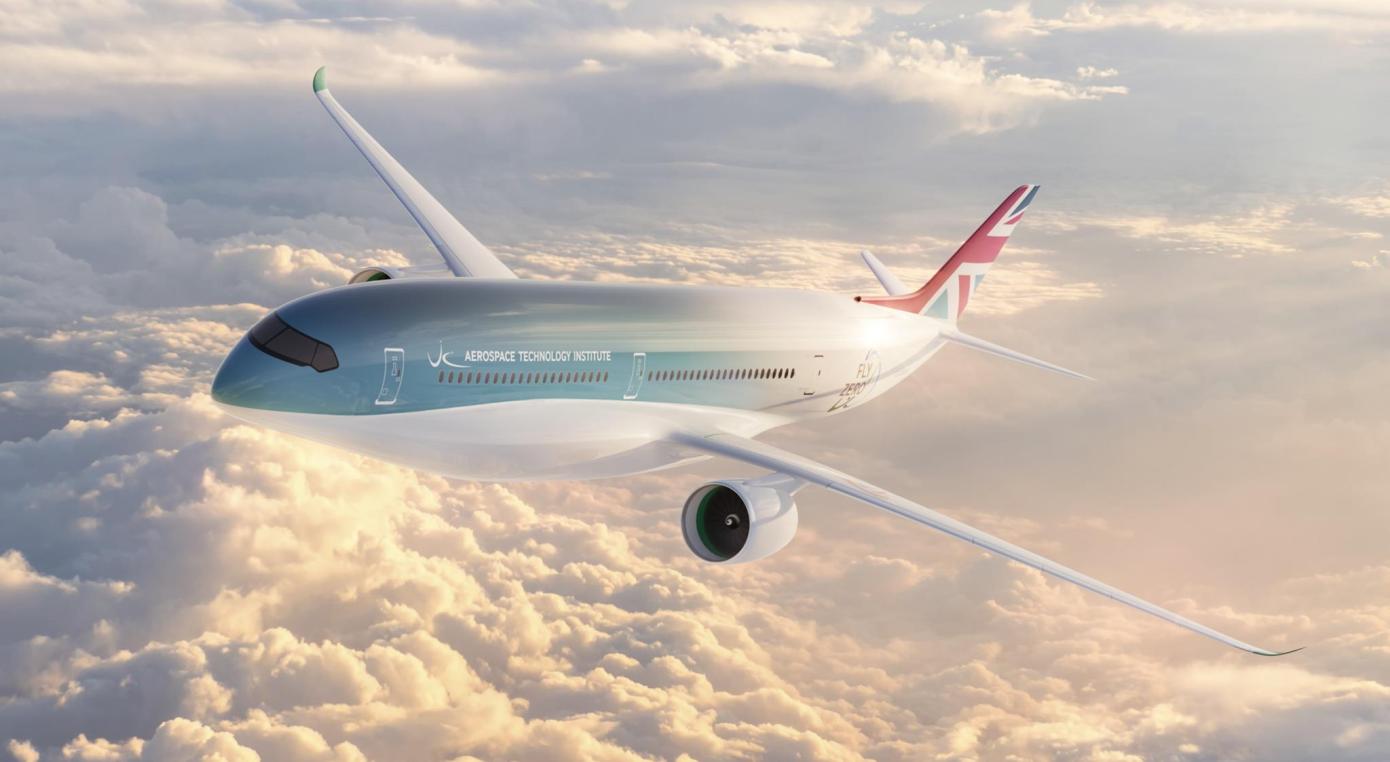It’s a midsize commercial plane, able to carry 279 passengers, and designed for transatlantic flights with one refueling stop or no stop at all. Okay, nothing remarkable here. But what’s extraordinary is that the concept aircraft is expected to carry out this task using the power of green liquid hydrogen alone. And according to ATI’s press release, the plane would offer the “same speed and comfort as today’s aircraft” but with zero carbon emissions. Plus, the ATI estimates a whopping range of 5,250 nautical miles — this would mean traveling from London to San Francisco or Beijing without a stop, or to Auckland with just one stop.
How does the aircraft work?
The aircraft’s 54-meter wingspan carries two turbofan engines powered by hydrogen combustion. The fuel is stored in four cryogenic fuel tanks at around minus 250 degrees Celsius: two larger tanks in the rear fuselage and two smaller in the front fuselage. The smaller tanks keep the aircraft balanced as the fuel burns off and eliminate the need for any additional aerodynamic structures.
Is such an aircraft viable at the moment?
Certainly not. And the ATI is well-aware of that, saying we could have the concept aircraft “one day.” My guess is that we’re years away from this “one day” when we could actually use (long-flight) commercial hydrogen planes. And, in fact, the ATI doesn’t specify how it plans to tackle the challenges associated with hydrogen.
1. Lower energy density
The ATI says that “liquid hydrogen is a lightweight fuel, which has three times the energy of kerosene and sixty times the energy of batteries per kilogram.” And, indeed, according to the US Office of Energy Efficiency and Renewable Energy (EERE), on a mass basis, hydrogen holds 120 MJ/kg of energy versus gasoline’s 44 MJ/kg. However, hydrogen has lower energy density by volume: 8 MJ/L versus gasoline’s 32MJ/L, meaning that larger quantities need to be stored to provide the equivalent energy. This, in turn, translates into the need for larger or more storage tanks which can affect both the capacity and the design of a plane. As a consequence, aircraft may have to carry fewer passengers to make space for the storage tanks, or become significantly larger. For instance, ZeroAvia plans to gradually scale up the capacity of its hydrogen-powered planes, with the current prototype, the HyFlyer I, being a six-seater. Another example is the ZEROe Blended-Wing Body concept aircraft by Airbus, shaped like a large triangle to accommodate the extra-large fuselages needed for long-distance flights with more than 200 passengers.
2. Elevated cost
Using green hydrogen doesn’t come cheap. It needs to be produced from water through a process called electrolysis, powered by renewable energy such as solar and wind. This process not only requires large amounts of energy, but is also very expensive. Specifically, according to the management consulting group McKinsey, liquid hydrogens is more than four times as expensive as conventional jet fuel, and likely to remain at least twice as expensive for the next few decades.
3. Lack of infrastructure
That’s a no brainer. An entirely new infrastructure would be needed to store and transport hydrogen at the airports. This would be expensive and doesn’t really exist at scale yet.
What’s the takeaway?
The FlyZero initiative plans to release more detailed findings early next year, including designs for regional, narrowbody, and midsize aircraft, economic and market reports, technology roadmaps, and a sustainability assessment. Hopefully, these findings will give us clearer answers. In the meantime, one thing we can say for certain is that the UK is betting on hydrogen for the future of aviation, although it’s debatable whether this specific tech will mark the industry’s new dawn. We’re years away from eliminating the challenges related to the use of green hydrogen at such a large scale, and until then it’s possible that batteries or sustainable aviation fuels (SAFs) will have solved the problem of zero-emission flying and hydrogen might not become mainstream at all.


